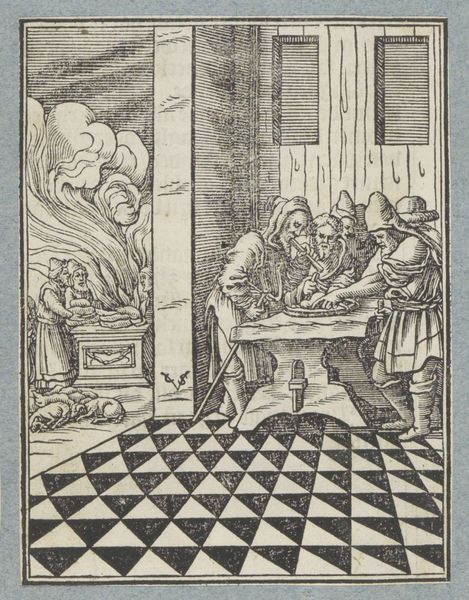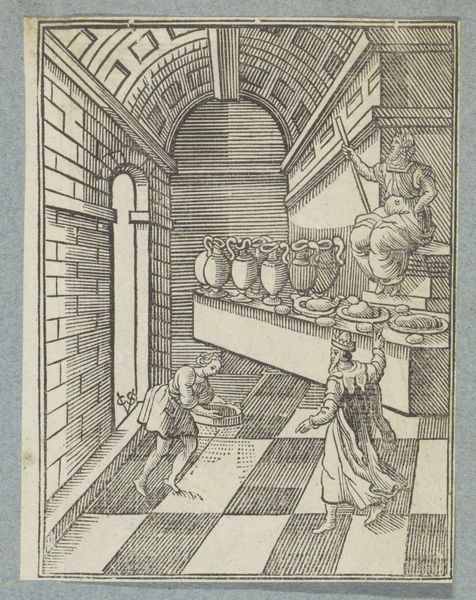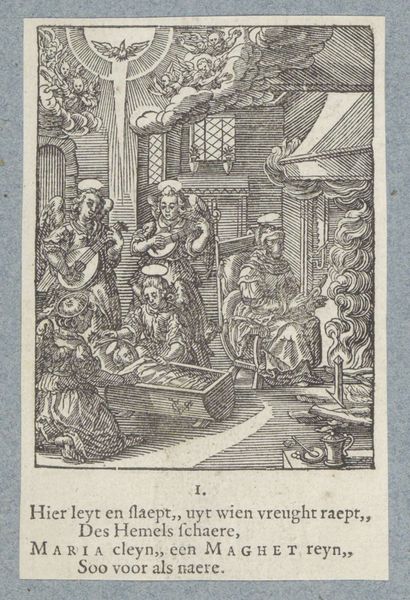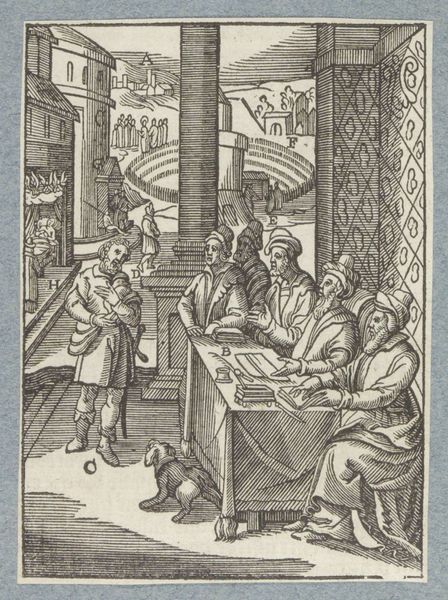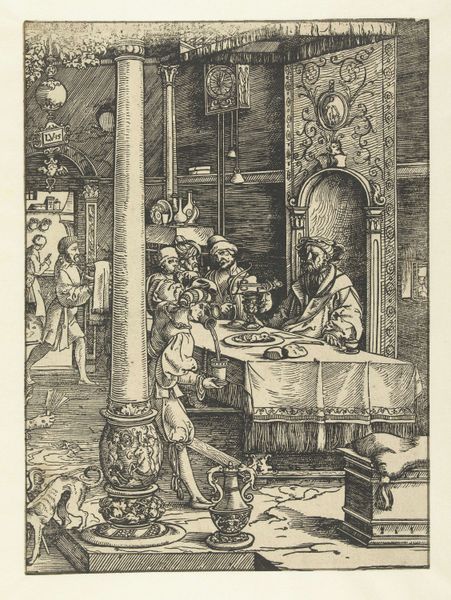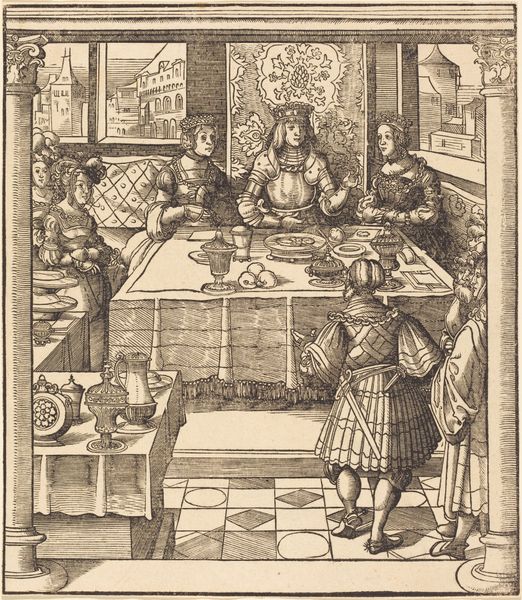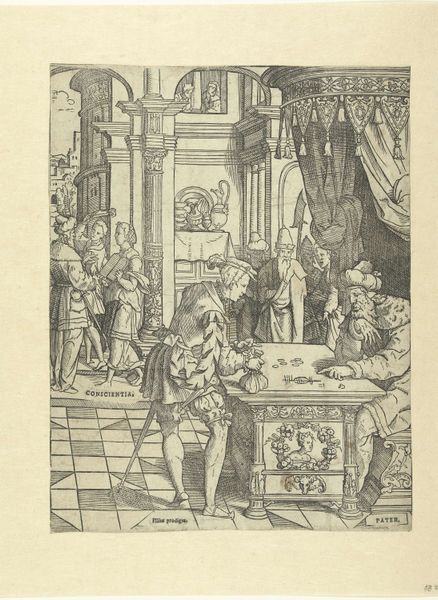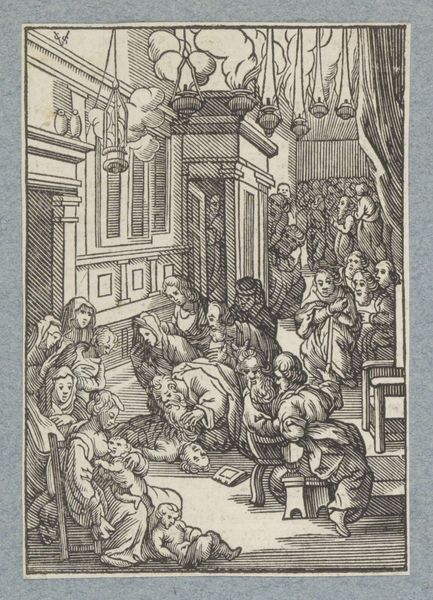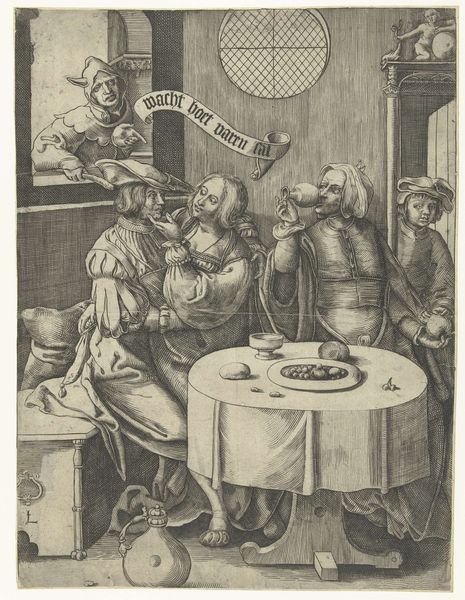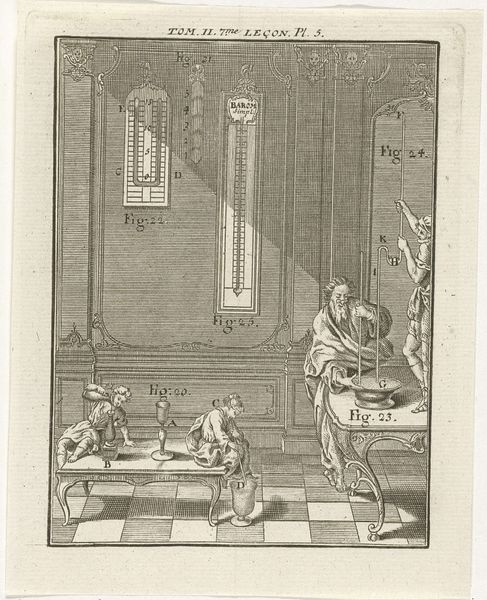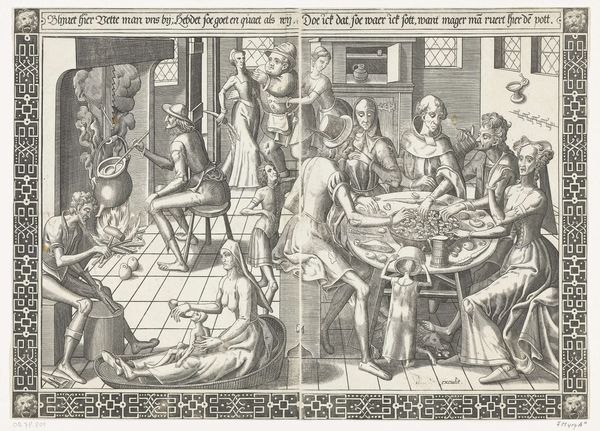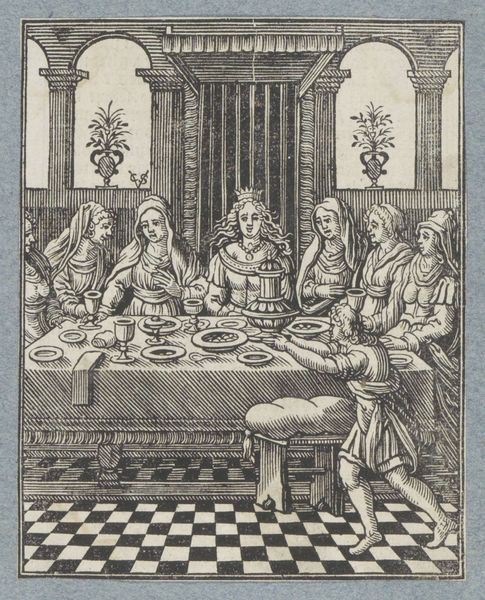
print, engraving
#
medieval
#
narrative-art
# print
#
geometric
#
history-painting
#
engraving
Dimensions: height 109 mm, width 85 mm
Copyright: Rijks Museum: Open Domain
Editor: This engraving from 1645-1646, "Plaag van de kikkers" by Christoffel van Sichem II, depicts a rather chaotic scene with frogs everywhere! I’m immediately drawn to how the geometric floor contrasts with the organic forms of the frogs. What stands out to you? Curator: I'm fascinated by the emotional resonance of this scene, seen through a historical lens. The "Plaag van de Kikkers" isn't just a historical painting; it's a symbolic representation of disruption and divine displeasure. Consider how the artist uses the symbol of the frog, traditionally linked with fertility and transformation, and turns it into a sign of chaos. What might this inversion tell us? Editor: So, the frog, normally a positive symbol, becomes something negative here? Curator: Exactly! Think about how the artist transforms a cultural symbol into something ominous. This plague wasn’t simply about an abundance of amphibians, it's about the distortion of order, a corruption of the natural and social fabric. And notice the people--their postures, expressions, all telling a story about their awareness. Do you see fear? Resignation? Editor: I do notice the expressions. Some seem annoyed, others, almost accepting. It makes me wonder, were these images also a form of political commentary at the time? Curator: Absolutely! Visual symbols often carried a potent charge, acting as a commentary on power, faith, and social structures. In analyzing the deeper context, the piece reveals historical and cultural memories, connecting to us through this symbolic lens. What has been most insightful for you? Editor: Understanding how the artist manipulates symbols and their meanings – twisting something positive into a sign of disorder is compelling! Curator: Indeed. It illustrates how powerful visual language can be, shaping perceptions and encoding cultural narratives across time.
Comments
No comments
Be the first to comment and join the conversation on the ultimate creative platform.
